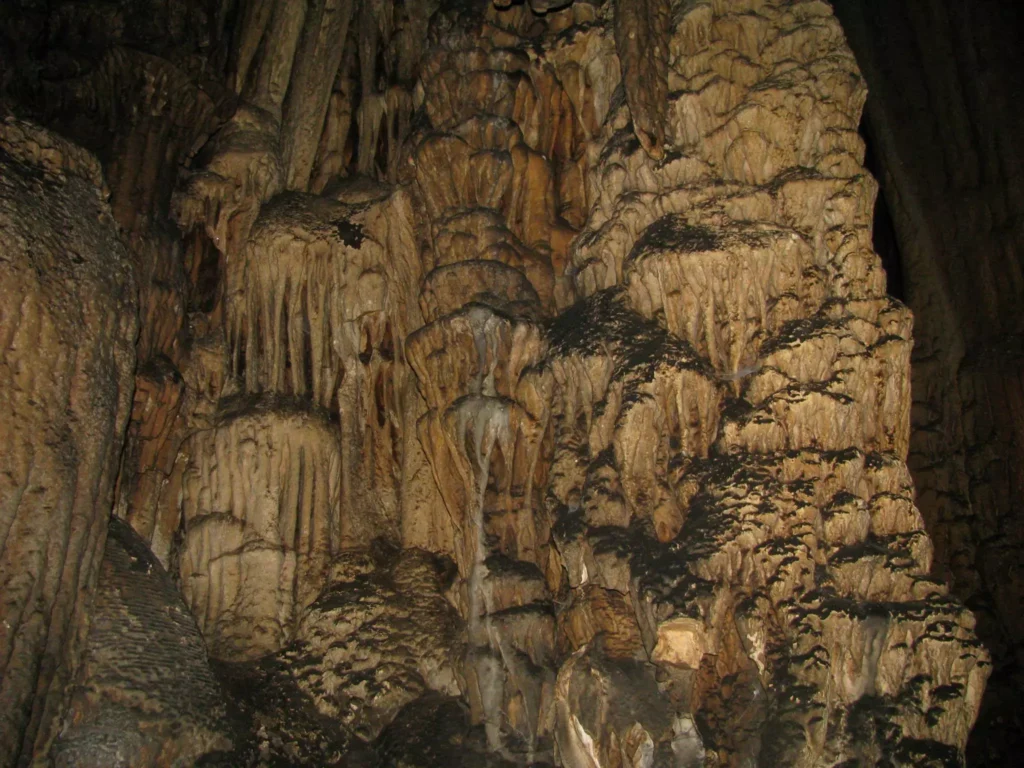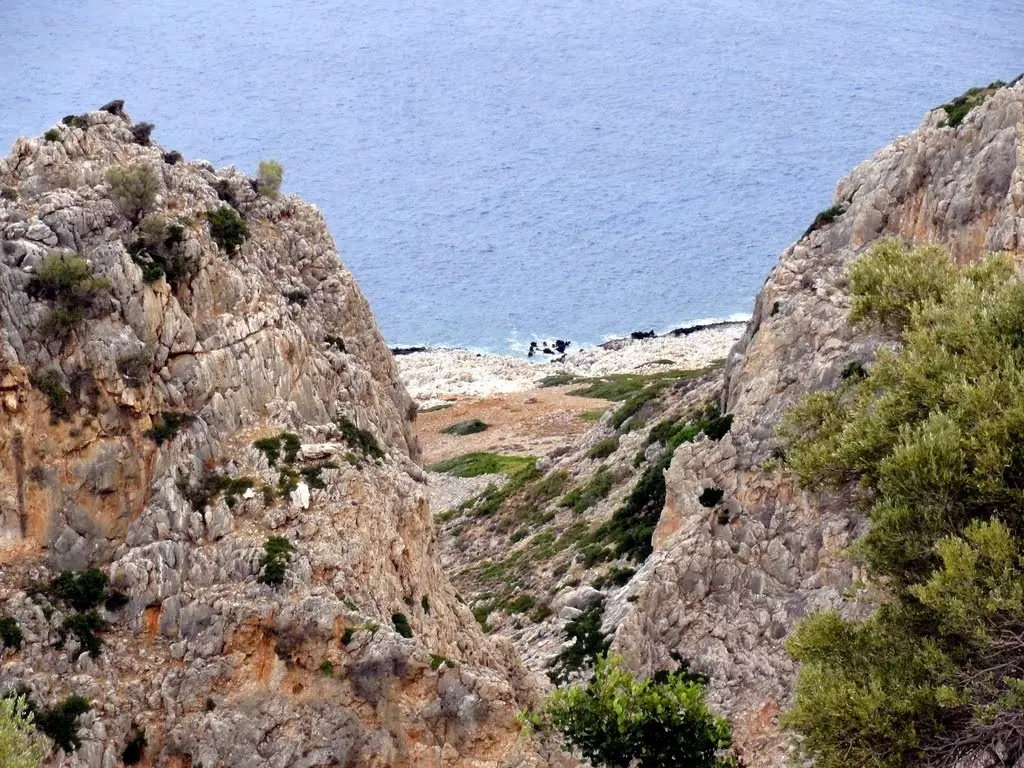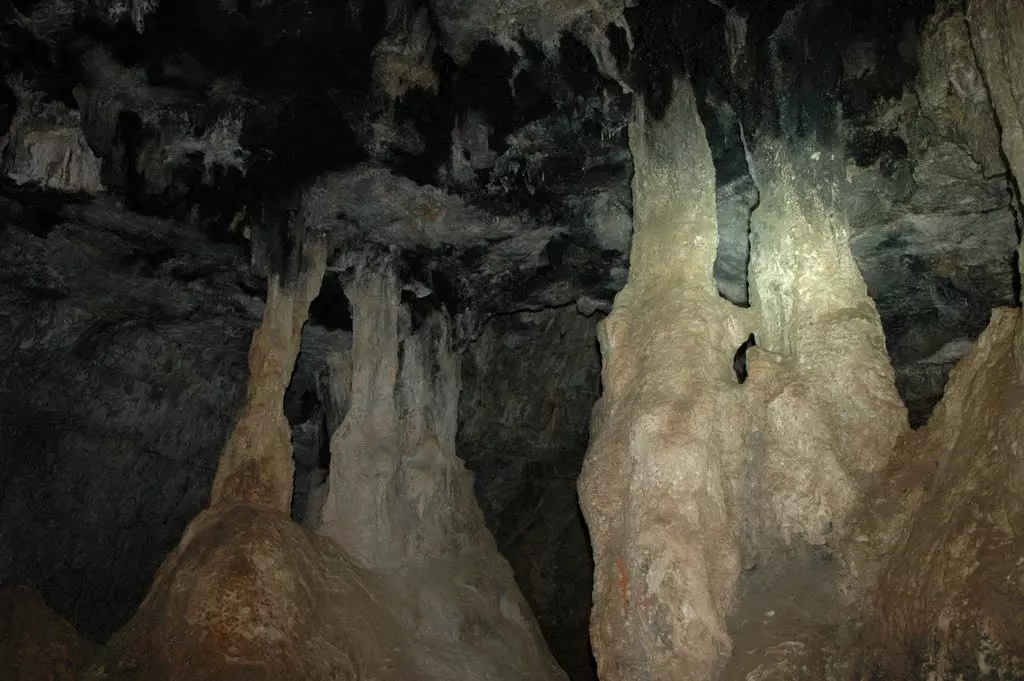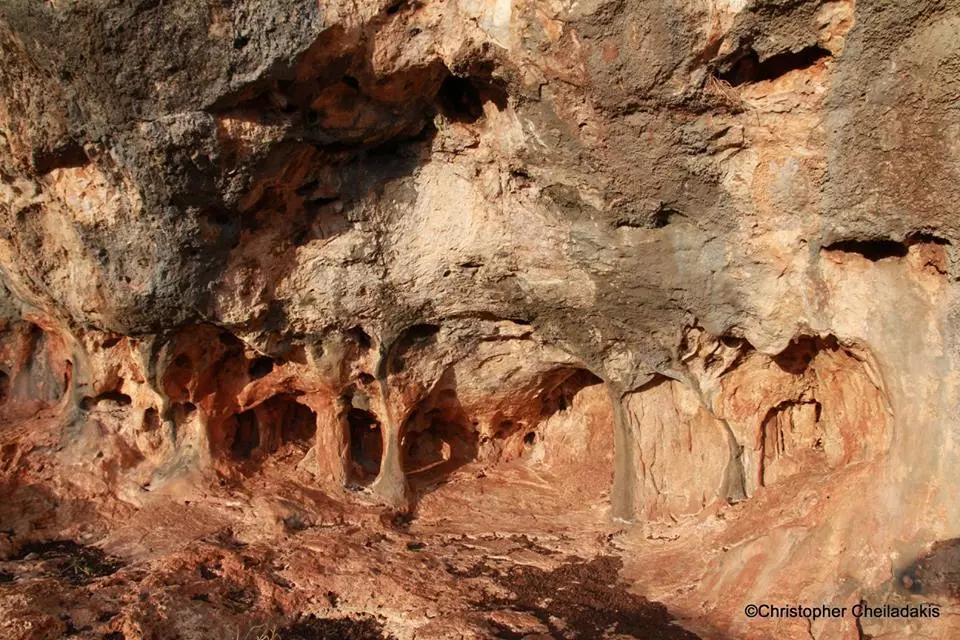The luxurious villa “Afeidia” is located in the area of Kafkala-Mahairida, 2, 5 km away from the village Chorafakia, in the northwest part of the Municipality of Akrotiri. It was named after the abundance of biodiversity and the natural beauty that surround it.




Avlaki gorge is located in the area Arkoudovounia in Melecha Cape, near the monastery Gouverneto, 16km east of Chania city. It is one of the most important gorges in Crete with a particular religious value, as many monks and hermits found shelter in its caves. Inside the small canyon, there is the deserted Katholiko monastery, one of the oldest monasteries in Crete; therefore, the gorge is also called Katholiko Gorge.
The gorge is not accessible in all its length, but there is a paved path that starts from the Monastery of Our Lady of Angels Gouverneto and heads to Katholiko monastery. Walking on the path is easy, but quite downhill, so the return is a bit tiring. After 10' of walking, you will meet the Cave Arkoudiotissa with the ancient temple of Artemis. From there the trail becomes steeper and the scenery rougher.
After 10 more minutes, you arrive at the abandoned monastery of Katholiko and the cave of Saint John the Hermit, who lived here. The cave is very deep (151m) and whoever wants to walk inside it must have a torch. From the monastery, one can walk along the riverbed for more than 15-25 and reach the exit of the gorge to the sea, after meeting the caves where the hermits lived in the past.
At the exit of the gorge, a narrow and rocky fjord is shaped by deep blue water. There is a small Venetian well, a small harbor where the monks parked and repaired their boats, and a quarry for the building materials of the monastery. Also, here is a boat-shaped rock, which is said to be a pirate ship that was petrified by the curses of the abbot of the monastery.
https://www.cretanbeaches.com/en/gorges-and-canyons-in-crete/west-crete-gorges-chania/avlaki-katholiko-gorge

The cave Lera or Pan is formed at the western slopes of the steep mount Varies, at an altitude of 70m, above the lagoon of Stavros, around 15km northeast of Chania. The cave took its name after the chieftain of Cape Akrotiri, Stephanos Leras, who was hiding around the area between 1821 and 1833.
Excavations by K. Davaras certified its use from the Neolithic to the Byzantine period, with the important findings being the inscriptions of the Classical period mentioning the worship of the god Pan and the Nymphs.
In the background, there is the natural spring of water, known as "Lake" (Limni). Its first room is formed by a large plateau covering an area of 12x10 meters; on its right side, there are three carved niches where the tributes, statues, or the clay plates were placed with some representations. The first chamber of the cave has dimensions 30x20x10m and is divided in the middle by two stalagmite columns.
The second chamber has dimensions of about 26x15x10m. Between tall columns, a narrow passage with carved stairs leads to a third room, which is the main worship area of 14x18x9 meters with a pond known as Limni (lake).
Around the basin with the clear water and at the base of the stalagmites, the Minoans placed their offerings to the nymph of the cave. There are beautiful columns and stalagmites with an impressive angel wing-like stalagmite. The choice of Stavros for the shooting of the legendary film Zorbas by Michalis Kakogiannis with Alan Bates and Anthony Quinn in 1963 and 1964 brought the Hollywood taste to the picturesque harbor.
The cave Lera then played the role of the lignite mine, and it seems that the men of Anthony Quinn carried out the first excavations. From in 1959-1961, the French archaeologist Paul Faure carried out some first informal excavations and in 1966 they were officially excavated. The official excavations revealed many clays figurine heads, female figures seated on a throne, vases parts (some in black), a black clay figurine (about 10 cm) where fingerprints of the creator were still visible, Late Minoan, Archaic, Classical, and Hellenistic pottery sherds that reveal the constant use of the cave.
https://www.cretanbeaches.com/en/caves/lera-cave-stavros

Cave Arkoudospilios (Bear Cave) or the Cave of Panagia Arkoudiotissa is located above the Katholiko gorge of Akrotiri near Chania, 2km north of the Gouverneto monastery, along the trail connecting Gouverneto monastery with Katholiko Monastery.
The cave is an old riverbed that no longer exists and consists of a large room with some special partly-damaged decoration and a smoke-blackened roof. There is a smaller second room where one enters through a very narrow passage.
After this, the cave continues, but the opening is very narrow to fit a human body. The name Arkoudospilios (bear cave) comes from the stalagmite in the form of a bear that is ready to drink water, located near the entrance of the cave. In front of the bear, there is a small pond with water.
According to legend, Virgin Mary petrified the bear that was stealing the hard-to-find water from the hermits living in the cave, who were suffering from thirst. In the cave, inscriptions have been found depicting the gods Apollo and Artemis.
According to archaeologists, the cave operated as a sanctuary in ancient Crete, dedicated to the goddess Artemis, which was transformed into a bear. Today, a chapel is housed inside the cave, dedicated to the Panagia (Virgin Mary) Arkoudiotissa. The church celebrates on February 2 (the Presentation of Jesus at the Temple - Hypapante), with many locals flocking to the cave and spending the night around fires. For this reason, the roof of the cave is smoked.
https://www.cretanbeaches.com/en/caves/arkoudospilios-cave

At the northwest tip of Akrotiri Cape, Chania, we meet the well-marked path that crosses the small ravine of Mavre Poros. This seemingly barren and inhospitable landscape was a haven for hermits and is full of hidden treasures, such as wildflowers, caves, ancient lime-kilns and wells, rock shelters, and cavernous churches.
One of the most well-kept secrets of the area is the cave of Haviare, one of the most beautiful of Akrotiri that has a very rich cave decoration. However, the beauty is not limited to the cave but continues in the surrounding area. A few meters away from the beautiful and imposing entrance of the cave, we see several crystals.
They are superficial and not hidden deep in the ground. The rock of the area is typical crystalline limestone, quite common in the mountainous areas of western Crete. But what makes the area of Haviare stand out is that the crystals are not a small parenthesis in the dark limestone, but dominate the landscape. Visitors should not pick the crystal pieces because this seemingly innocent habit was the reason for the destruction of such areas with easier access in other areas of Crete.
https://www.cretanbeaches.com/en/caves/haviare-cave-at-akrotiri